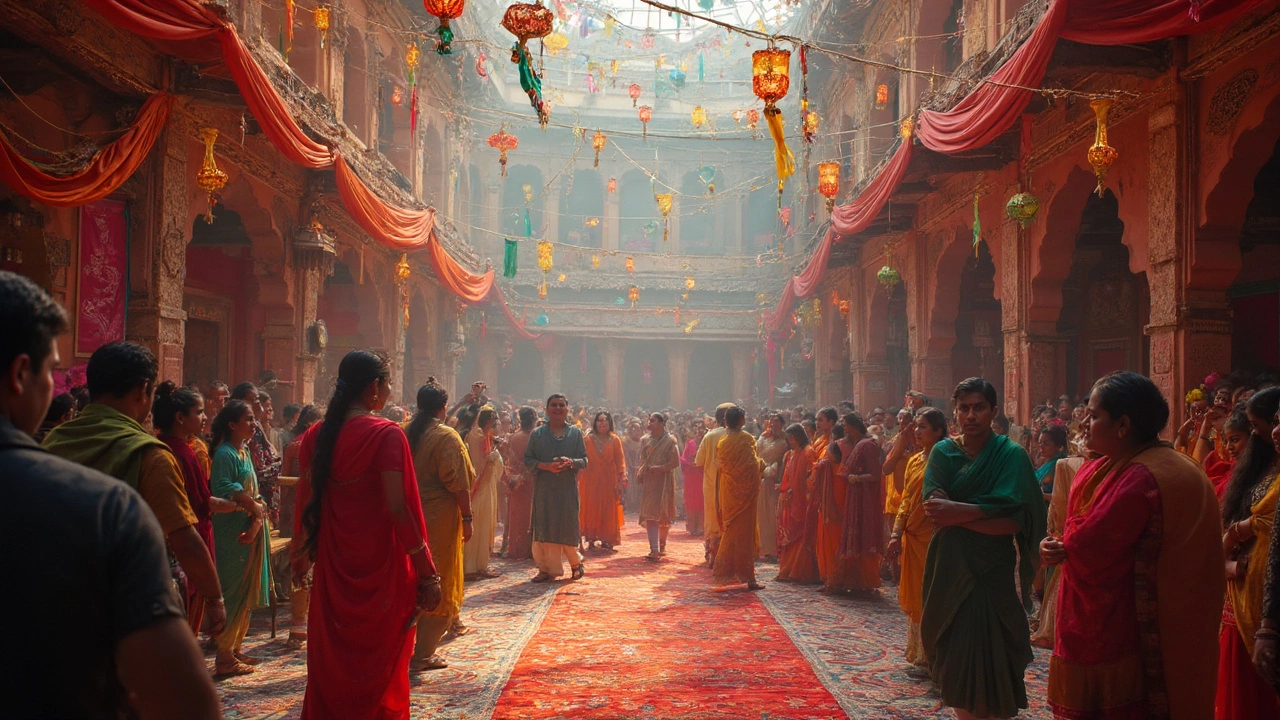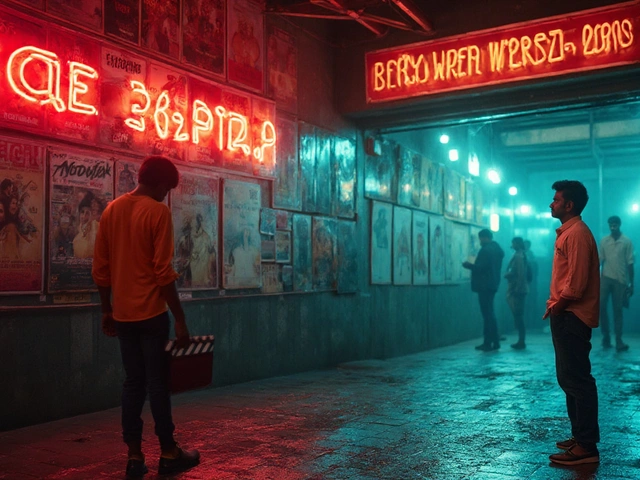
Every blockbuster film industry has a few skeletons in the closet, and India is no exception. In a world where cinema often basks in the glow of glitz and glamour, flops are the unexpected guests nobody wants. But they exist—and sometimes, they end up being as talked about as the hits. Let's talk about one whopper of a flop that everyone still whispers about, even years later.
Imagine sinking boatloads of cash into making a film that promises the moon. It's got the A-list actors, grand sets, catchy music, and hype that seems unstoppable. Yet, when this much-anticipated film hit the screens, it was met with cricket chirps instead of applause. We're talking about a flop so grand that it left the producers clutching their wallets and the audience scratching their heads.
- The Movie that Lost Big
- Why It Failed at the Box Office
- Lessons Learned from the Flop
- Redemption through Time or Never?
The Movie that Lost Big
Alright, so let’s dive into what’s generally considered one of the biggest disasters in Indian cinema history: Bombay Velvet. Released in 2015, this film was hyped beyond belief before it hit the screens. Based on historian Gyan Prakash’s book "Mumbai Fables," the movie was a period piece set in the kitschy 1960s Bombay. It had all the makings of a classic—think big stars, a director with a strong reputation in Bollywood, and a hefty budget around Rs 120 crores (which is a lot by any measure).
The film starred Bollywood heartthrob Ranbir Kapoor and was directed by Anurag Kashyap, who’s known for his gritty, raw style. Geared up with promising elements, the film sounded like a definite win, right? But just wait. Upon release, it tanked. It managed to make only about Rs 24 crores at the box office. Ouch.
What really happened, you ask? Well, the film faced multiple hurdles, from disagreements during production to reshoots that only added to the costs. Then, there was the marketing strategy. It seemed that the promotion didn’t quite connect with audiences who were maybe expecting something else entirely. The post-mortem discussions often point out that the audience didn’t connect with the film’s stylized storytelling and complex narrative—which, while creative, didn't strike the right chord with most viewers.
Moreover, there was stiff competition at the box office during its release, which didn’t really help matters. In the hindsight of over-the-top marketing, maybe the target audience was confused or misled? The answers are varied but they all converge on one fact: for Bombay Velvet, things spiraled out of control in a way nobody predicted.
Why It Failed at the Box Office
So, what went wrong with this grand Indian cinema project? Believe it or not, even the best laid plans can go sideways. First off, let's talk about expectations. The movie industry thrives on them. People want a good story, relatable characters, and moments that make them cheer, laugh, or cry. When expectations are sky-high and not met, it sets up a recipe for disaster.
One of the biggest issues was the storyline. In this case, the script was promising but failed to connect with the audience. A plot that was supposed to wow the crowd came across as confusing, leaving viewers more puzzled than entertained. Combine that with dialogues that didn’t hit the mark, and the film struggled to hold the audience's attention.
Marketing played its part too. Often, it's all about the buzz. This movie was overhyped, giving it a halo it couldn’t live up to. The trailers promised a roller-coaster ride but ended up showcasing the best bits without much in between. The gap between hype and what was delivered was too wide, causing disappointment.
Let’s not forget timing—something as small as releasing a film on the wrong date can make a huge difference. Competing with other big releases or during a time when folks just weren’t heading to theatres ensured the film was already facing an uphill battle.
Finally, the budget. Yep, even massive financial backing doesn't guarantee success. Bollywood disasters like this tend to blow their budgets on all the wrong things—splashy sets and lavish locations without focusing on the core: the story.
Add it all up, and you've got an Indian cinema project that fizzled out rather than fired up, teaching us all that the film industry’s as unpredictable as its storylines.

Lessons Learned from the Flop
Even when a film tanks like a lead balloon, it's not all doom and gloom—there’s plenty to learn from a stumble of this scale. First up, let's look at budgeting. Overspending on flashy sets or high-profile stars doesn’t guarantee a hit. Sometimes, less is more. The underdog films that have less glitz but better storytelling can end up hitting it out of the park. So, it's crucial to balance spending between visual appeal and the core story.
Another hard-earned lesson is knowing your audience. This flop showed that even the most beloved Bollywood stars can’t save a film if it doesn't connect with the viewers. Understanding cultural nuances and market trends is critical. The audience's preferences are constantly evolving, so what's trendy one year might bomb the next.
Marketing and release strategies also play a huge role. Timing the release of a classic film is key. Competing with other blockbuster releases at the wrong time can lead to a quick trip to the bargain bin. Additionally, misleading promos that promise something the film doesn’t deliver can end up creating negative word of mouth.
Lastly, it's all about the content quality. A great story trumps all. If the plot is weak or the script riddled with clichés, audiences aren’t sticking around for the interval. Strong narrative and fresh perspectives can breathe new life into Indian cinema, keeping viewers engaged and wanting more.
- Budget wisely to avoid unnecessary bloating of the film's cost.
- Understand and engage with your audience effectively.
- Plan the film's release strategically.
- Focus on crafting a solid narrative, avoiding overused tropes.
These lessons aren't just for filmmakers but are great reminders for anyone involved in creative projects. Learn from mistakes, adjust, and keep pushing forward!
Redemption through Time or Never?
Some movies don’t do well initially but slowly gain a cult following. This phenomenon isn't unheard of in Indian cinema. So, does this flop rise from the ashes, or does it remain a blunder? Often, movies that flop financially, like 'Andaz Apna Apna' with stars as popular as Aamir Khan and Salman Khan, find redemption over time. But not every film is that lucky.
This particular film we're talking about—despite its disastrous box office numbers—has elements that later critics or audiences might appreciate. Maybe it conveyed ideas ahead of its time or didn't connect immediately due to cultural contexts that were misunderstood. Such films sometimes see a revival on TV or streaming platforms, where new generations rediscover the story and performances, much like forgotten treasures.
Interestingly, in India, many cinematic gems initially overlooked gain approval slowly as filmmaking styles and societal norms evolve. It brings up a philosophical question: if a film is loved decades later, does it still count as a flop? Perhaps the initial loss can morph into a victory of art over time.
However, not every dud sees sunnier days. Factors like weak scripts, miscast actors, or irrelevant themes can land a movie in the forgotten genre forever. Ultimately, while some films become classics in the making years later, others remain primarily as cautionary tales in Indian cinema.





Write a comment